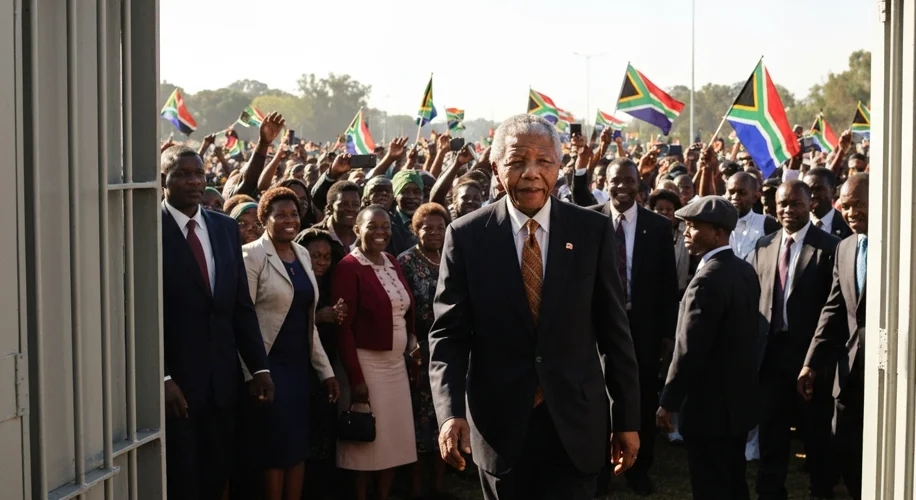The year is 1990. For decades, South Africa had been a nation suffocating under the brutal grip of apartheid, a system of institutionalized racial segregation and discrimination. Imagine a land of breathtaking beauty, vibrant cultures, and immense potential, systematically fractured by laws that declared human beings unequal based solely on the color of their skin. This was the reality for millions of Black South Africans, denied basic rights, confined to squalid townships, and subjected to constant surveillance and oppression.

The roots of apartheid run deep, intertwining with colonial history and the persistent desire for white minority rule. Following the election of the National Party in 1948, this insidious ideology was codified into law. The Population Registration Act classified every South African by race, while the Group Areas Act dictated where people could live, forcing Black families from their homes and into designated, often impoverished, areas. Pass laws controlled the movement of Black Africans, turning every interaction with law enforcement into a potential arrest. Education, healthcare, employment – every facet of life was governed by racial hierarchy, designed to maintain white supremacy.
But the human spirit, even under the harshest oppression, possesses an indomitable will. The struggle against apartheid was not a single event, but a protracted, courageous, and often heartbreaking journey. From the early days of peaceful protest, epitomized by the Defiance Campaign of the 1950s, to the armed struggle that emerged after the Sharpeville massacre in 1960, where peaceful protestors were gunned down by police, South Africans resisted with every fiber of their being. Figures like Nelson Mandela, Walter Sisulu, and Oliver Tambo, leaders of the African National Congress (ANC), became symbols of this defiance, enduring long years of imprisonment for their beliefs. Their unwavering commitment, even from behind prison bars, fueled the resolve of those on the outside.
The international community, though initially slow to act, gradually recognized the injustice of apartheid. Reports of human rights abuses, the stark reality of segregated facilities, and the courage of the anti-apartheid movement began to chip away at South Africa’s international standing. The United Nations declared apartheid a crime against humanity. Boycotts of South African goods, sporting bans, and cultural sanctions began to isolate the regime. Musicians, artists, and activists worldwide lent their voices to the cause, using their platforms to shine a light on the atrocities occurring in South Africa. Statements from leaders like Desmond Tutu, Archbishop of Cape Town, who famously described apartheid as a “satanic system,” resonated globally, galvanizing support for sanctions and divestment.
The pressure mounted throughout the 1980s. The Soweto Uprising of 1976, a student-led protest against Afrikaans being made the language of instruction, became another watershed moment, showcasing the brutality of the state and the depth of popular discontent. Internally, the UDF (United Democratic Front) mobilized a broad coalition of anti-apartheid groups, creating a powerful internal resistance. Externally, sanctions began to bite, impacting the South African economy. The world watched as the apartheid government found itself increasingly isolated and under siege.
Then came February 2, 1990. In a speech that reverberated around the globe, President F.W. de Klerk announced the unbanning of the ANC and other liberation movements, and crucially, the impending release of Nelson Mandela. The air in South Africa, and indeed the world, was thick with anticipation and a fragile hope. On February 11, 1990, Nelson Mandela, a man imprisoned for 27 years, walked out of Victor Verster Prison, a free man. The images of his release, his dignified bearing, and his call for reconciliation, not retribution, marked a pivotal turning point. It was not the end of the struggle, but the beginning of a new, arduous chapter: negotiation and the dismantling of the apartheid state.
The ensuing years were fraught with challenges. Violence flared, and negotiations were tense, but the commitment to a democratic South Africa, guided by the principles of equality and justice, largely prevailed. The Nobel Peace Prize, awarded jointly to Nelson Mandela and F.W. de Klerk in 1993, symbolized the remarkable, though difficult, transition.
Finally, on April 27, 1994, South Africa held its first multiracial democratic elections. Millions lined up, many for the first time in their lives, to cast their vote, a profound act of reclaiming their citizenship and their future. Nelson Mandela was inaugurated as the nation’s first Black president, ushering in an era of hope and reconciliation.
The legacy of apartheid is a stark reminder of the human cost of systemic racism and the enduring power of collective action. While South Africa continues to grapple with the economic and social inequalities inherited from this dark period, the dismantling of apartheid stands as a testament to the resilience of the human spirit, the impact of global solidarity, and the transformative potential of courageous leadership. It is a story that continues to echo, a powerful lesson in the long, often painful, but ultimately achievable march towards justice and equality.

